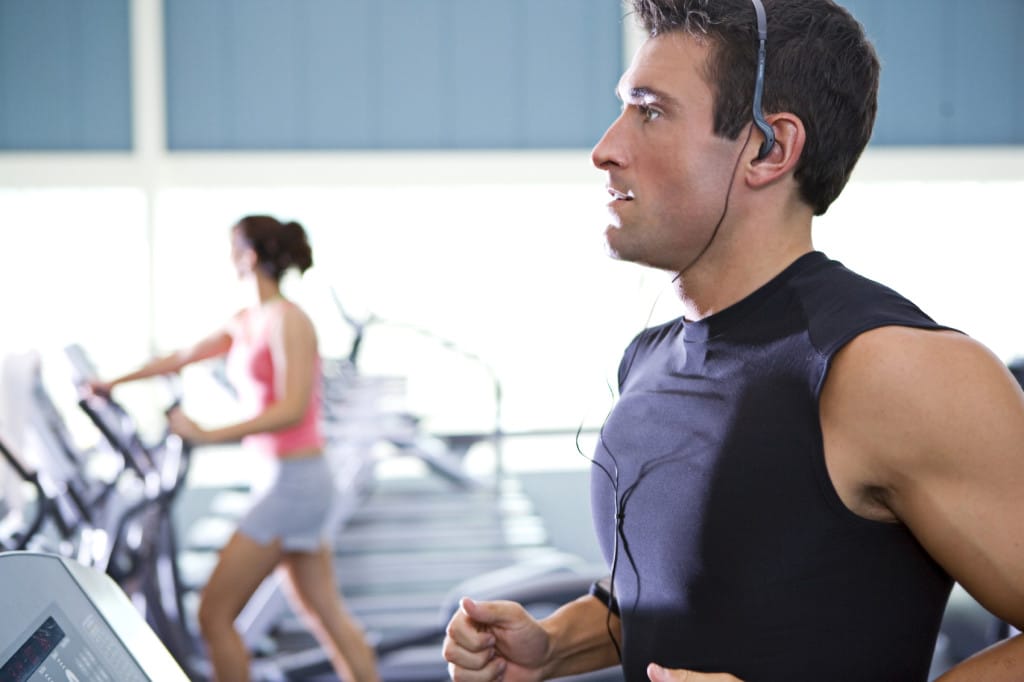
Making music — and not just listening to it — while exercising makes the exercise easier, a remarkable new experiment finds, suggesting that the human love of music may have evolved, in part, to ease physical effort.
Researchers and exercisers have long known, of course, that listening to music alters the experience of exercising. Earlier studies have shown, for instance, that briskly paced music tends to inspire equally briskly paced workouts, and that music also can distract and calm nervous competitors before a race or other high-pressure situation, improving their subsequent performance.
But to date, no one had thought to investigate whether creating — and not merely hearing — music might have an effect on workouts, let alone whether the impact would be qualitatively different than when exercisers passively listen to music pumped through gym speakers or their ear buds.
So, for the new study, which was published online last week in Proceedings of the National Academy of Sciences, researchers at the Max Planck Institute for Human Cognition and Brain Sciences in Leipzig, Germany, and other institutions began by inventing an electronic kit that could be integrated into the internal workings of weight-training machines, transforming them into oversize boom boxes. Once installed, the kit would produce a range of propulsive, electronic-style music with a variety of sound levels and rhythms, depending on how the machine’s weight bar or other mechanisms were manipulated during workouts.
The researchers installed the kits into three different workout machines, one a stair-stepper, the other two weight machines with bars that could be raised or pulled down to stimulate various muscles.
They then recruited a group of 63 healthy men and women and divided them into groups, each of which was assigned to use one of the musically equipped machines during a strenuous though brief six-minute exercise session.
As the volunteers strained, their machines chirped and pinged with a thumping 130 beats per minute, the sound level rising or falling with each individual’s effort and twining with the rhythms created by the other two exercisers. “Participants could express themselves on the machines by, for instance, modulating rhythms and creating melodies,” said Thomas Hans Fritz, a researcher at the Max Planck Institute who led the study.
The groups were, in effect, D.J.’ing their workouts, creating sounds that echoed their physical efforts.
During a separate exercise session, each group used the same machines, but minus the musical add-ons, while elsewhere in the gym, other volunteers sweated at the musically equipped machines, meaning that one group was passively listening to sounds created by another.
Throughout each workout, the researchers monitored the force their volunteers generated while using the machines, as well as whether the weight lifters’ movements tended to stutter or flow and how much oxygen the volunteers consumed, a reliable measure of physical effort. Afterward, the scientists asked the volunteers to rate the tolerability or unpleasantness of the session, on a scale from 1 to 20.
Tabulated afterward, the results showed that most of the volunteers had generated significantly greater muscular force while working at the musically equipped machines than the unmodified ones. They also had used less oxygen to generate that force and reported that their exertions had felt less strenuous. Their movements were also more smooth in general, resulting in a steadier flow of music.
Creating their own rhythms and melodies had lowered the physiological cost of exercise and greatly increased its subjective allure compared with when the exercisers passively listened to virtually the same music, Dr. Fritz said.
A similar dynamic may have motivated early humans to whistle or hum while they hunted or tilled and later to raise their voices in song during barn raisings and other intense physical labor, he said.
But why orchestrating your own soundtrack should have more physical benefit than merely hearing similar music in the background is not altogether clear.
“We think that the observed effects are most probably due to a greater degree of emotional motor control,” when you actively engage in making music, Dr. Fritz said. Emotional motor control, as opposed to the more workaday “deliberate” type that normally guides our muscular movements, he said, operates almost below consciousness. Your body responds to it with little volition and you move, he said, with reduced effort and increased joy. This is “musical ecstasy,” Dr. Fritz said, and it seems to have permeated, to some degree, the gym where the exercisers composed music while sweating.
Unfortunately, the musical kits that Dr. Fritz and his colleagues have developed are not available commercially, although they may be in the future. For now, he said, you may need to content yourself with purposely ignoring the supplied soundtrack at your local gym and instead singing to yourself. Perhaps harmonize, no matter how tunelessly, with a workout partner. Disdain naysayers and music lovers. You will be, in the felicitous phrasing of Dr. Fritz, “jymming; that’s like jamming, but with a ‘y’ from ‘gym.’”
Source: http://nyti.ms/1aBf66B










 Researchers have created new, specific memories by direct manipulation of the brain that could help understand and potentially resolve learning and memory disorders.
Researchers have created new, specific memories by direct manipulation of the brain that could help understand and potentially resolve learning and memory disorders.